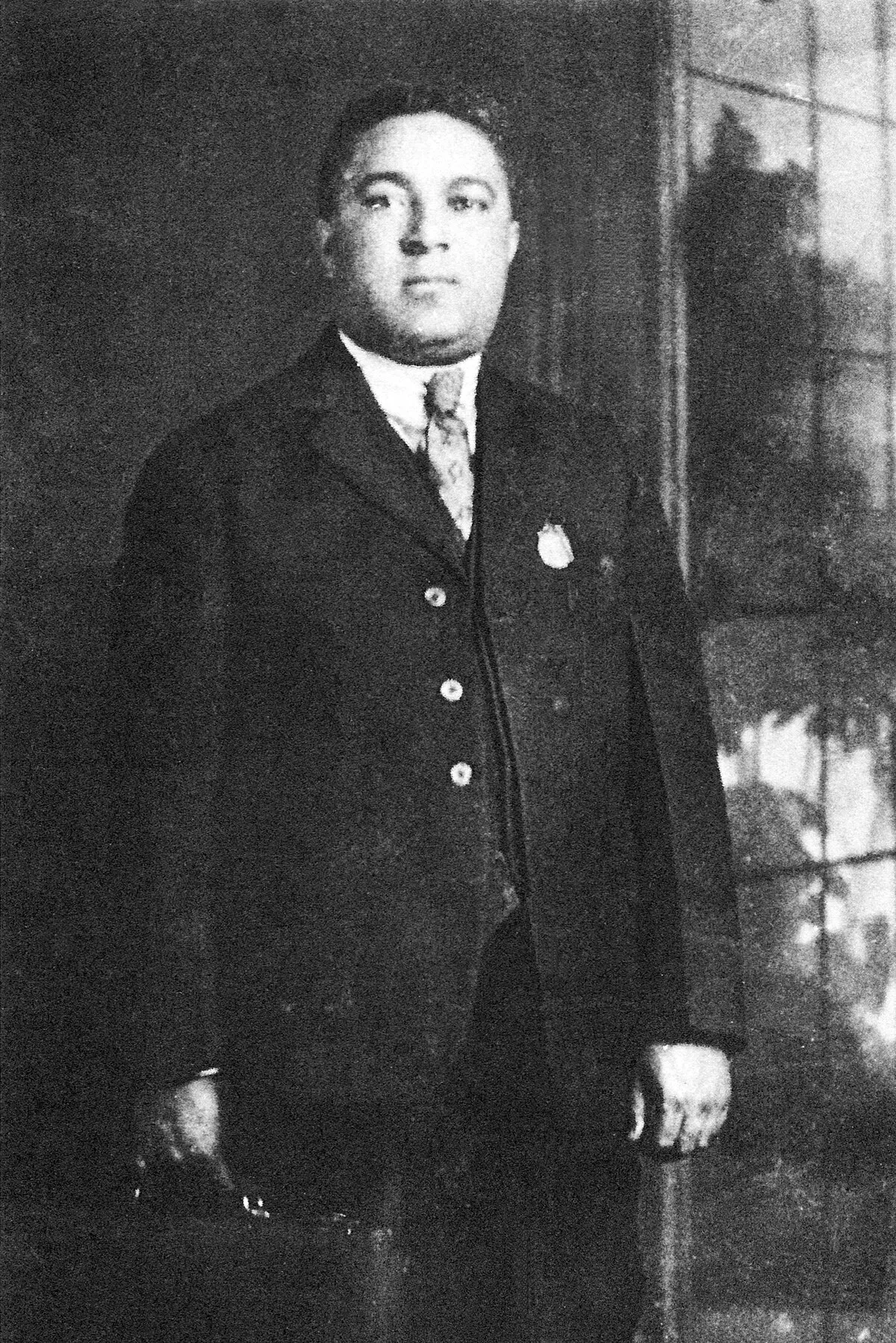 1.
1. James "Jimmie" Noone was an American jazz clarinetist and bandleader.

 1.
1. James "Jimmie" Noone was an American jazz clarinetist and bandleader.
At the time of his death Jimmie Noone was leading a quartet in Los Angeles and was part of an all-star band that was reviving interest in traditional New Orleans jazz in the 1940s.
James Jimmie Noone was born on April 23,1895, near the Stanton Plantation in New Orleans, Louisiana to Lucene Daggs and James Jimmie Noone.
In 1910, Jimmie Noone's family moved to Saint Bernard Parish, Louisiana.
Jimmie Noone switched to the clarinet and studied with Lorenzo Tio, and the young Sidney Bechet.
In 1913, Jimmie Noone was playing professionally with Freddie Keppard, in Storyville, replacing Bechet.
In 1917, Jimmie Noone played with Kid Ory and Oscar Celestin until the Storyville district was permanently closed.
Jimmie Noone rejoined Keppard and the Original Creole Orchestra on the vaudeville circuit until the group broke up the following year.
In 1918, Jimmie Noone moved to Chicago, Illinois, where he studied with symphony clarinetist Franz Schoepp.
Jimmie Noone played for two years at Chicago's Royal Garden Cafe with Paul Barbarin, King Oliver, Bill Johnson, Lottie Taylor and Eddie Vinson.
In 1920, Jimmie Noone joined Keppard in Doc Cook's dance orchestra, in which he played saxophone and clarinet for six years.
In 1926, Noone began to lead the band at the Apex Club, at 330 E 35th Street, one of a wealth of Jazz Age clubs on Chicago's South Side.
Jimmie Noone signed with Brunswick Records in May 1928 and was assigned to their Vocalion label.
Jimmie Noone seemed to keep one foot in traditional New Orleans bandsmanship and the other in the new movement toward virtuoso swing solo playing.
Jimmie Noone remained in Chicago, working at the Apex Club until it was raided and shut down in 1929, and then worked at other Chicago clubs throughout the next decade.
Jimmie Noone recorded with Doc Cook's band as well as his own.
In 1931, Jimmie Noone left Chicago for a month at the Savoy Ballroom, and in 1935 he briefly moved to New York City, to start a band and a club with Wellman Braud.
Jimmie Noone made long tours around the country, including performances in New Orleans.
Jimmie Noone remained with Brunswick through 1935 and then signed with Decca in early 1936 and one session each for Decca in 1936,1937 and 1940.
In 1943, Jimmie Noone moved to Los Angeles, California, where a traditional New Orleans-style jazz revival was under way.
The late Maurice Ravel, who acknowledged basing his Bolero on a Jimmie Noone improvisation, had publicly dared any symphonic clarinetist to perform Jimmie's technical feats.
Jimmie Noone performed on four broadcasts of The Orson Welles Almanac.
Until a few nights before his death Jimmie Noone continued to perform with own quartet.
Jimmie Noone signed with Capitol Records in March 1944 and his last recordings were made for Capitol's New American Jazz album, produced by Dave Dexter, Jr.
Jimmie Noone is generally regarded as one of the greatest of the second generation of jazz clarinetists, along with Johnny Dodds and Sidney Bechet.
Jimmie Noone's playing is not as blues-tinged as Dodds nor as flamboyant as Bechet, but is perhaps more lyrical and sophisticated, and certainly makes more use of "sweet" flavoring.
Jimmie Noone was an important influence on later clarinetists such as Artie Shaw, Irving Fazola and Benny Goodman.
Jimmie Noone's discography concluded with recordings of his performances on The Orson Welles Almanac in March and April 1944.
The second disc released by Crescent Records features "Blues for Jimmie Noone", recorded in August 1944.
Jimmie Noone made five albums with The Cheathams and taught jazz in the San Diego public school system from 1967 to 1984.
Jimmie Noone died of a heart seizure in 1991, aged 52.